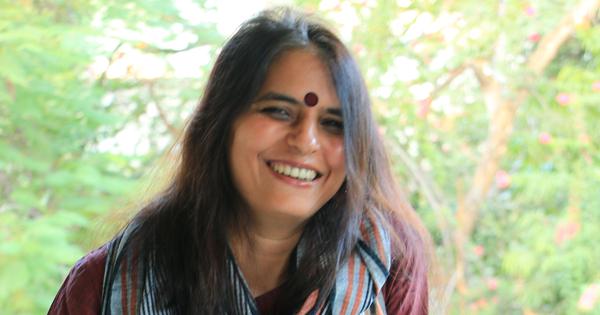
Sindhi literature, in India especially, if understood at all, is hardly associated with voices beyond the Sufi poets of Sindh. Its relationality with modernity, its presence in Partition literature, and its condition of being displaced in geography remain undiscovered. Translator and Translation Studies scholar Rita Kothari’s latest contribution towards the representation of Sindhi literature needs to be understood in this larger context of silence.
Scandalous beginnings
The work in question is a translation. Ittehad was the debut novel of the first woman Sindhi novelist, Guli Sadarangani. Published in 1941, Ittehad was a scandalous work: it dared to imagine a love story between a Hindu and a Muslim at a time when hatred between the two communities was intensifying. It would have caused even more outrage had the novel been published in its entirety: its last chapters offered a second resolution to the theme of inter-religious love, showing marriage between a Hindu man and a Muslim girl. These chapters were dropped in 1941 so that the novel ended on a “moderate” note of a marriage between a Muslim man and a Hindu woman. The “love jihad” angle makes it sensational even today.
In 1983, the novel was republished with its “original” ending in India, with a new Hindi-ised name, “Jeevan Milapu.” Now, more than 40 years later, Kothari has brought it back for conversation about women’s writing, themes of love and religious hatred, and translation concerns of those working in minor languages.
The genius of Kothari’s translation lies in the way she brings the two novels and titles – “Ittehad” and “Jeevan Milapu” – together as Ittehad: A Life Together, thus honouring the dual nature of its existence. The story opens with Asha, a girl born and brought up in Almora the Uttar Pradesh, of that time:
Even as a little girl, Asha demonstrated an artistic bent of mind. She drew alluring and beautiful pictures that left many accomplished artists astonished. She had not been tutored in the formal art of drawing and painting; it was an innate talent. In fact, she had never set foot in a school. Not only could she draw and paint, but she could also compose verses. She sang with such melody and heartrending sweetness her voice provided salve to a wounded heart. Nature had sown many kinds of seeds in Asha, but those seeds had not received the water they needed to blossom. Asha was suffused with many desires and aspirations, but the outlets of expression were few, rather closed. She had to rein in her desires.
A few pages into the story, she gets introduced to Hamid, “a handsome man,” her cousin’s Sindhi friend described thus:
We consider the country of Sindh arid and desolate, but the flower that has risen from such a deserted land is far more beautiful than those we find in our temperate climes.
It is love at first sight:
Hamid and Asha gazed into each other’s eyes. Asha’s eyes confirmed the truth of Vijay’s words, and Hamid’s eyes lit up behind his spectacles. Their eyes had managed to convey so much to each other. It was enough. Ruh ka rihaan, the souls had conversed.
Their love is opposed by the orthodox people around her: a couple of them are lost to death, while a couple of others come around, eventually rising beyond the pettiness of religion. In the end, the two are united – a life together is symbolic of not just marriage but of cohabitation between the two religions – along with another Hindu-Muslim couple, imagining a gentle closure to struggles of love and pain.
A multicultural discourse
If the plot sounds familiar or brings back the memories of the 18th and 19th centuries’ notion of fiction – where all is well that ends well – the comparison is not unfair or outlandish. The similarity is compounded by other strands: familiar issues about property rights and male inheritors are around; the love expressed is almost asexual, or rendered gentle rather than screamed aloud or expressed physically; and a lot of “action” is in the words, with the scenes unfolding in the form of conversation and dialogue rather than events.
But where the story stands out as different is that the context of the dialogue: an early discourse of multiculturalism in South Asia with topical concerns such as feminism, inter-regional love (Almora and Karachi), pan-Indian networks of influence of the Brahmo Samaj, and transnational networks of political philosophy and social mobility (Russia for communism, and London for education) locating the Sindhi novel in the zeitgeist. Sadarangani knew what she was talking about: these connections across geographies are not imaginary stuff made up by a naive novelist; these are reflections of how intertwined these geographies were.
Ittehad is very likely to generate more curiosity around Sindhi fiction: who were the writers? Why were/are they not understood in the larger notion of Indian literature? What is meant by literary “productivity”? What comparative lenses need to be designed to understand how and where Sindhi meets other Indian languages and their literary expressions? Is there a dialogue between Sindhi diaspora writers and writers writing from Sindh? Kothari’s translation will be of immense service as a nudge towards these questions.
Ittehad: A Life Together, Guli Sadarangani, translated from the Sindhi by Rita Kothari, Zubaan.
📰 Crime Today News is proudly sponsored by DRYFRUIT & CO – A Brand by eFabby Global LLC
Design & Developed by Yes Mom Hosting






